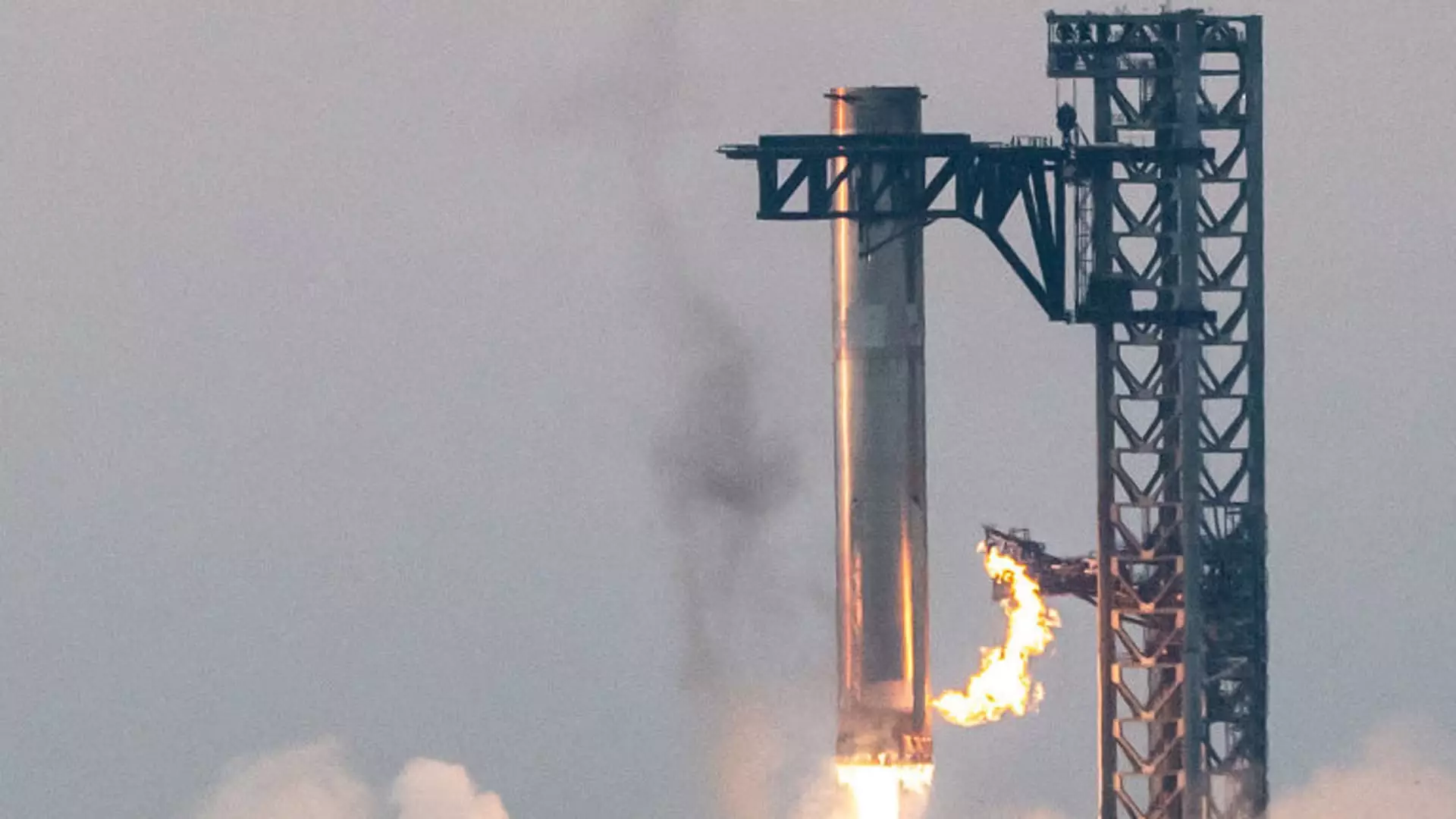SpaceX’s recent test flight of the Starship rocket represents a significant advancement in the evolution of space travel and reusable rocket technology. Launched from the company’s Starbase facility near Brownsville, Texas, the mission achieved multiple notable milestones that reaffirm SpaceX’s position at the forefront of aerospace innovation. This article will delve into the details of the launch, the implications for future missions, and the obstacles SpaceX has faced in achieving this ambitious dream.
On a clear Sunday morning at 8:25 a.m. ET, SpaceX executed its fifth test flight of Starship, marking a critical moment in the quest for reusable launch systems. With a height exceeding 20 stories, the “Super Heavy” booster triumphantly returned to the launch tower’s arms nearly seven minutes after the initial launch—a feat that elicited awe and excitement from spectators and team members alike. Dan Huot, the communications manager at SpaceX, encapsulated the moment’s incredibility, expressing disbelief at the seemingly magical catch.
The tech behind this operation is nothing short of remarkable. SpaceX’s engineers have invested years into perfecting the technology necessary for the booster catch. With a dedicated team putting in tens of thousands of hours, the infrastructure required to facilitate this success was meticulously crafted. Meeting thousands of criteria during the recovery phase is essential; failure to do so would have resulted in the booster landing in the Gulf of Mexico instead of being retrieved at the launch site. This rigorous process showcases SpaceX’s commitment to safety and reliability.
Completing this test flight aligns seamlessly with NASA’s plans for future lunar exploration under the Artemis program. NASA Administrator Bill Nelson expressed congratulations to SpaceX, emphasizing the importance of ongoing tests for preparing ambitious missions to the Moon. The contract awarded to SpaceX to use the Starship system as a crewed lunar lander is a testament to the rocket’s potential to revolutionize space travel.
The ultimate objective for SpaceX is to conduct hundreds of Starship missions before any crewed flights, gradually accumulating invaluable data and experience that will contribute to the overarching goal of a fully reusable rocket system. Given that each test flight has advanced upon the last, the successful catch of the booster indicates a clear trajectory toward that goal. The implications of a fully reusable rocket could transform not only commercial space travel but also scientific research and exploration.
Despite the overwhelming success of this flight, SpaceX’s journey has not been without its hurdles. The company had been openly critical of the Federal Aviation Administration (FAA) for perceived delays due to environmental assessments. Although the FAA expedited the launch license process faster than anticipated, SpaceX still faced complications, including fines from environmental regulators regarding unauthorized discharges at its Texas launch site.
This tension between fast-paced innovation in aerospace and responsible environmental stewardship raises important questions for the industry. As companies like SpaceX push the envelope of what is possible, they must also navigate the complex regulatory landscape that aims to protect the ecosystems surrounding launch sites.
The Technical Specs: Innovation Meets Power
Starship’s engineering is as impressive as its missions. The fully stacked rocket stands at an astonishing 397 feet tall, making it the most powerful rocket ever launched. Remarkably, the Super Heavy booster houses an astonishing 33 Raptor engines, which work in unison to generate a mind-boggling 16.7 million pounds of thrust. To put that in perspective, this is almost double the power of NASA’s Space Launch System rocket.
Starship, with its own six-engine configuration, is designed for optimal efficiency in both Earth’s atmosphere and the vacuum of space. This versatile rocket runs on liquid oxygen and liquid methane, signifying a forward-thinking approach to propellant use. The entire system’s reliance on over 10 million pounds of propellant for launches underscores the level of engineering prowess behind this ambitious initiative.
In the grand scheme of the aerospace industry, SpaceX’s fifth Starship flight signifies more than just a successful test; it embodies a forward momentum toward a new era of space exploration. As the company continues refining its technology and overcoming obstacles, it sets the stage for unprecedented advancements in human spaceflight, including journeys to the Moon and potentially beyond. Elevated by a blend of innovation and determination, SpaceX remains steadfast in its mission to create a fully reusable rocket system that reshapes our understanding of space travel.


Leave a Reply